Visit to Birsay – one time capital of the Orkneys
In the summer of 2016 I visited the Orkney Islands off the coast of Scotland. It is an archipelago teeming with historical sites of great significance. The summer in Orkney is not very long and many locations are not easy to get to apart from a few weeks in the year. Indeed one site that is quite restricted is the island called the Brough of Birsay which you can only visit between mid-June and the end of September.
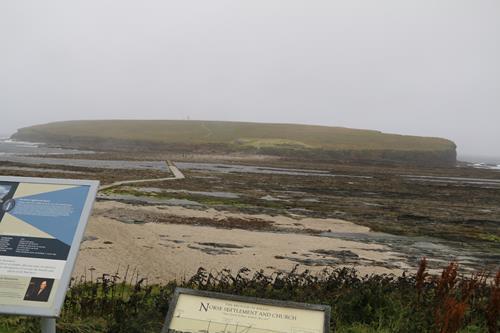
This windswept island was however once a focal point in the islands. It features remains of both Pictish and Viking settlements and was perhaps even the capital of the Viking Earls such as Thorfinn ‘the Mighty’, Earl of Orkney. The words ‘brough’ and ‘birsay’ are very descriptive as they seem to derive from the Old Norse borg or ‘fort’. ‘Brough’ implies a naturally defensive island fortress. ‘Birsay’ relates to the fact it is only accessible by a narrow neck of land.
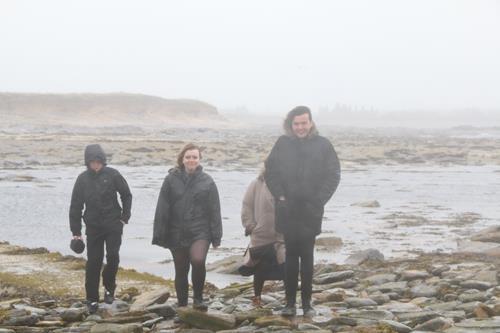
Today the Brough of Birsay is still a tidal island – connected to the mainland via a causeway. It is therefore important to check tide tables when visiting so as to not get cut off. Even during our hour or so on the island we noticed the sea rising quickly. I can also see why the island is only open at certain times of year. Even in August the weather can be mixed. Indeed the day we visited it was very windy and at times rather wet!
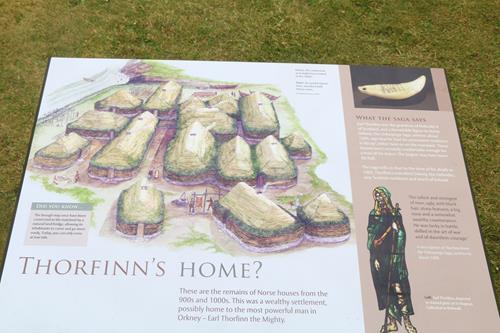
The Brough is well worth the effort of a visit though as it has a well preserved ruins of a Viking settlement and useful information displays. This one talks about Earl Thorfinn one of the most powerful of the Viking Earls who died circa 1065. The Orkneyingas Saga says Birsay was his home (although it might mean the mainland opposite the island, no one knows) and also records he was buried here:
Earl Thorfinn retained all his dominions to his dying day, and it is truly said that he. was the most powerful of all the Earls of the Orkneys. He obtained possession of eleven Earldoms in Scotland, all the Sudreyar (Hebrides), and a large territory in Ireland. … Earl Thorfinn was five winters old when Malcolm the King of Scots, his mother’s father, gave him the title of Earl, and after that he was Earl for seventy winters. He died towards the end of Harald Sigurdson’s reign. He is buried at Christ’s Kirk in Birgishrad (Birsay), which he had built.
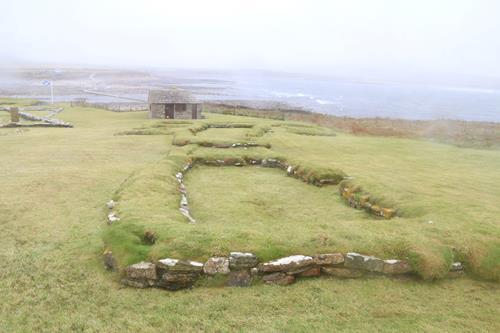
The Brough of Birsay was settled from the 7th to the 13th centuries AD. Today there are remains comprising of a 9th-century Viking-Age settlement as well as of the later 12th-century monastery and some evidence of the earlier pre Viking Pictish settlement of the 7th to 8th centuries.
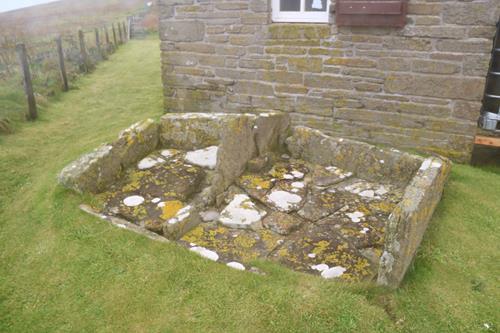
This is the hearth found in a Norse house towards the east side of the island and reconstructed at the main site.
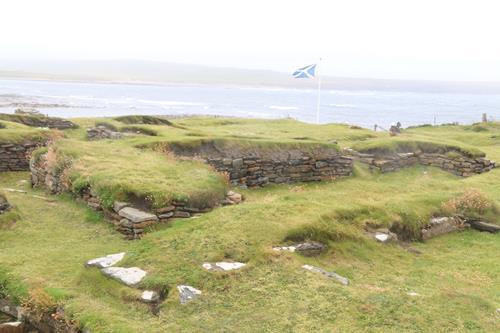
It is very easy to see the outlines and foundations of a dozen or so houses – some with multiple interior rooms. The Vikings here had some home comforts. There is even evidence of under floor heating and a smithy.
Birsay’s glory days of the 11th century soon passed however when the focal point of the Island shifted to Kirwall where the cathedral of St Magnus took over as the religious seat for the island in the 12th century.
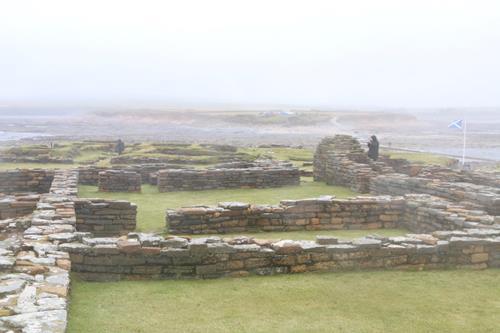
Today Birsay remains a beautiful, striking location that was fun to visit – even on wet and windy day.
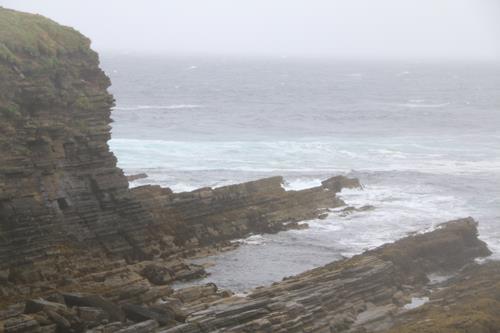
[image error]




